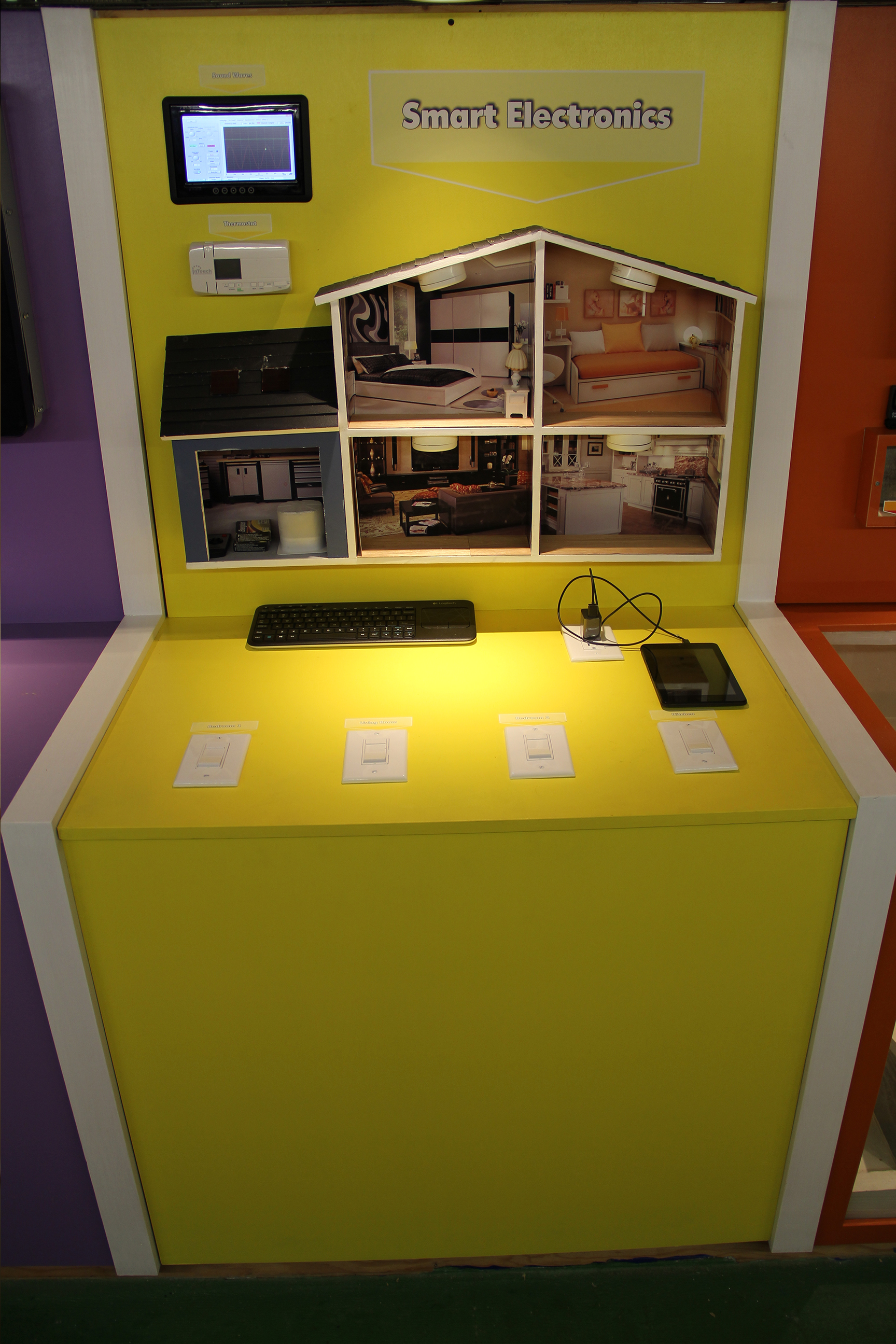-


Introduction:
Recent innovations in wireless technology enable you to control many aspects of your heating, appliances, lighting, and security within your home even while you are elsewhere. In addition, programmable controllers and smart sensors can save energy and make life more comfortable.
Objectives:
Students will know
- How my home can be controlled remotely
- What an audio data stream looks like
- How electronics can be used to efficiently and securely control power usage
Background Information:
Have you see those advertisements for programming a digital recorder to record your favorite TV show at home when you are stuck in traffic? Technology can do this and more! The process demonstrated at this station is called electromechanical home automation. Appliances or utilities can be turned on and off from remote device signals (from a laptop, cell phone, or other wireless device). These signals are sent wirelessly to a server and then to the controlled unit via radio waves, satellites or by fiber optic or other hard wired connections. What advantages are there to using them? Efficiency, security and convenience. Students will see simulated digital data flow being displayed as amplitude or pulse width on an oscilloscope between the outside of the trailer and the devices inside.
What the student will experience at this station:
Students will see two displays. One will be the layout of a single floor home showing the placement of control devices. Upon using a simulated cellphone the students can control remotely the mechanics and lighting of the display.Secondly students will be able to see what their voice looks like by observation of their voice generated electronic waves on an oscilloscope.

